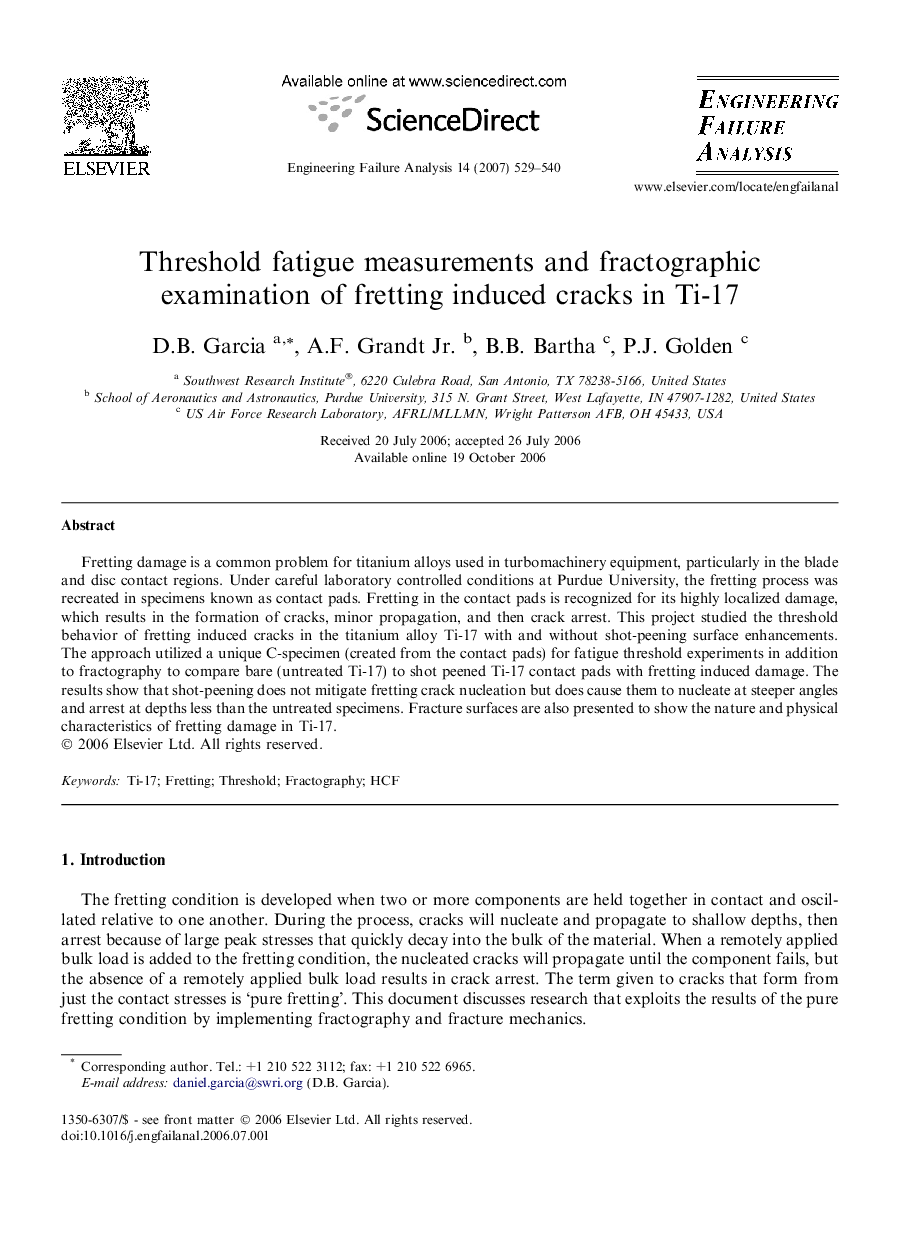| Article ID | Journal | Published Year | Pages | File Type |
|---|---|---|---|---|
| 764206 | Engineering Failure Analysis | 2007 | 12 Pages |
Fretting damage is a common problem for titanium alloys used in turbomachinery equipment, particularly in the blade and disc contact regions. Under careful laboratory controlled conditions at Purdue University, the fretting process was recreated in specimens known as contact pads. Fretting in the contact pads is recognized for its highly localized damage, which results in the formation of cracks, minor propagation, and then crack arrest. This project studied the threshold behavior of fretting induced cracks in the titanium alloy Ti-17 with and without shot-peening surface enhancements. The approach utilized a unique C-specimen (created from the contact pads) for fatigue threshold experiments in addition to fractography to compare bare (untreated Ti-17) to shot peened Ti-17 contact pads with fretting induced damage. The results show that shot-peening does not mitigate fretting crack nucleation but does cause them to nucleate at steeper angles and arrest at depths less than the untreated specimens. Fracture surfaces are also presented to show the nature and physical characteristics of fretting damage in Ti-17.
